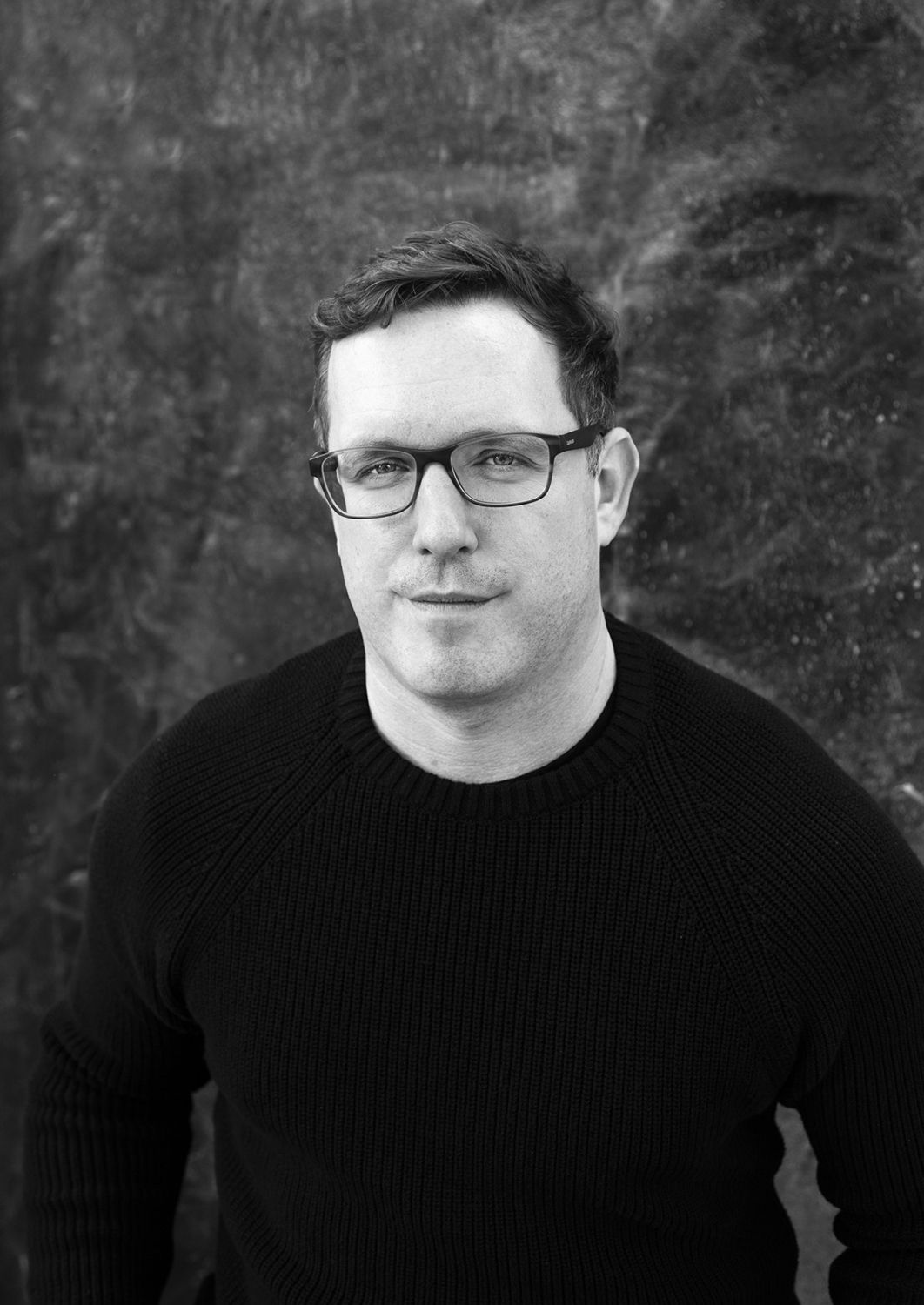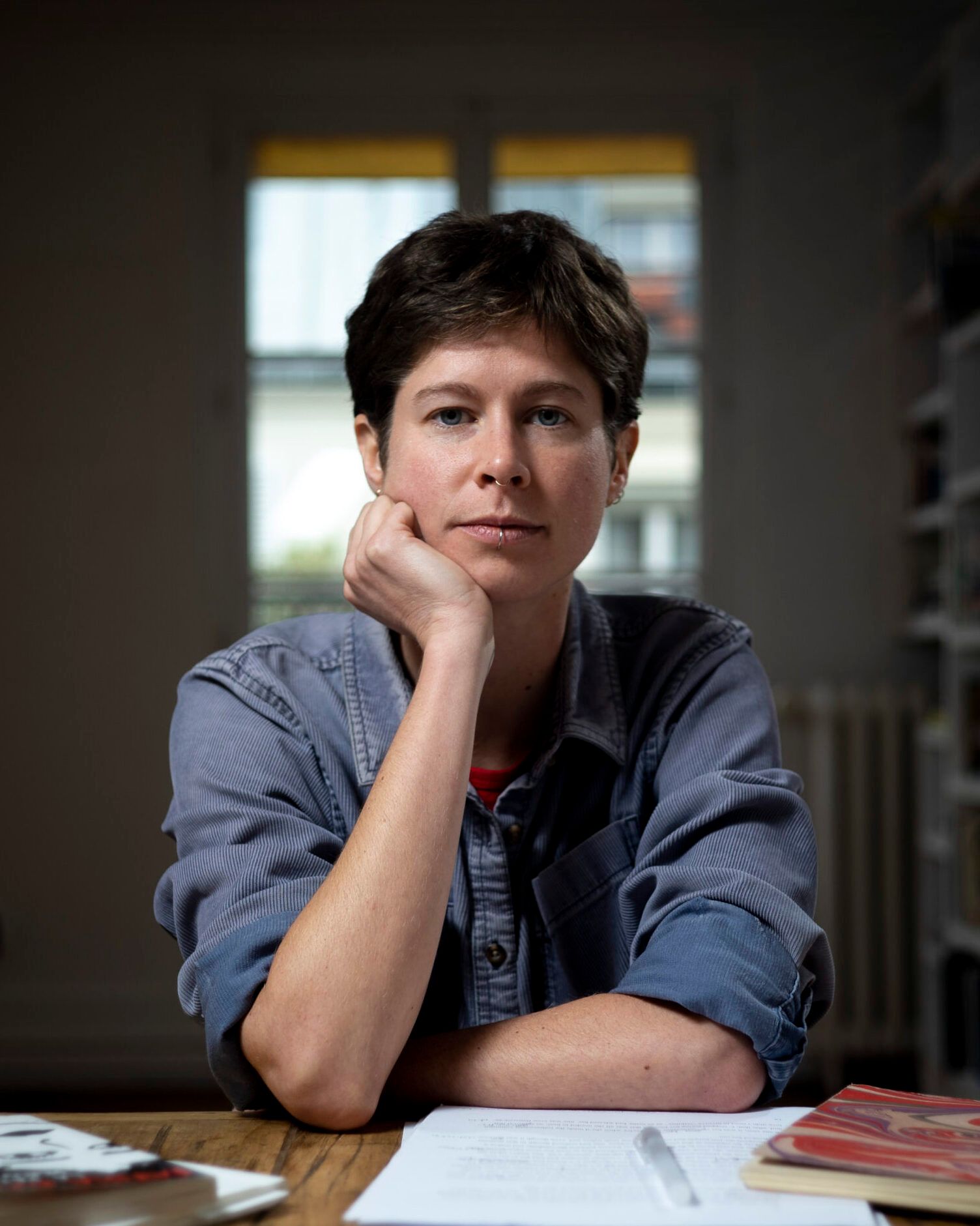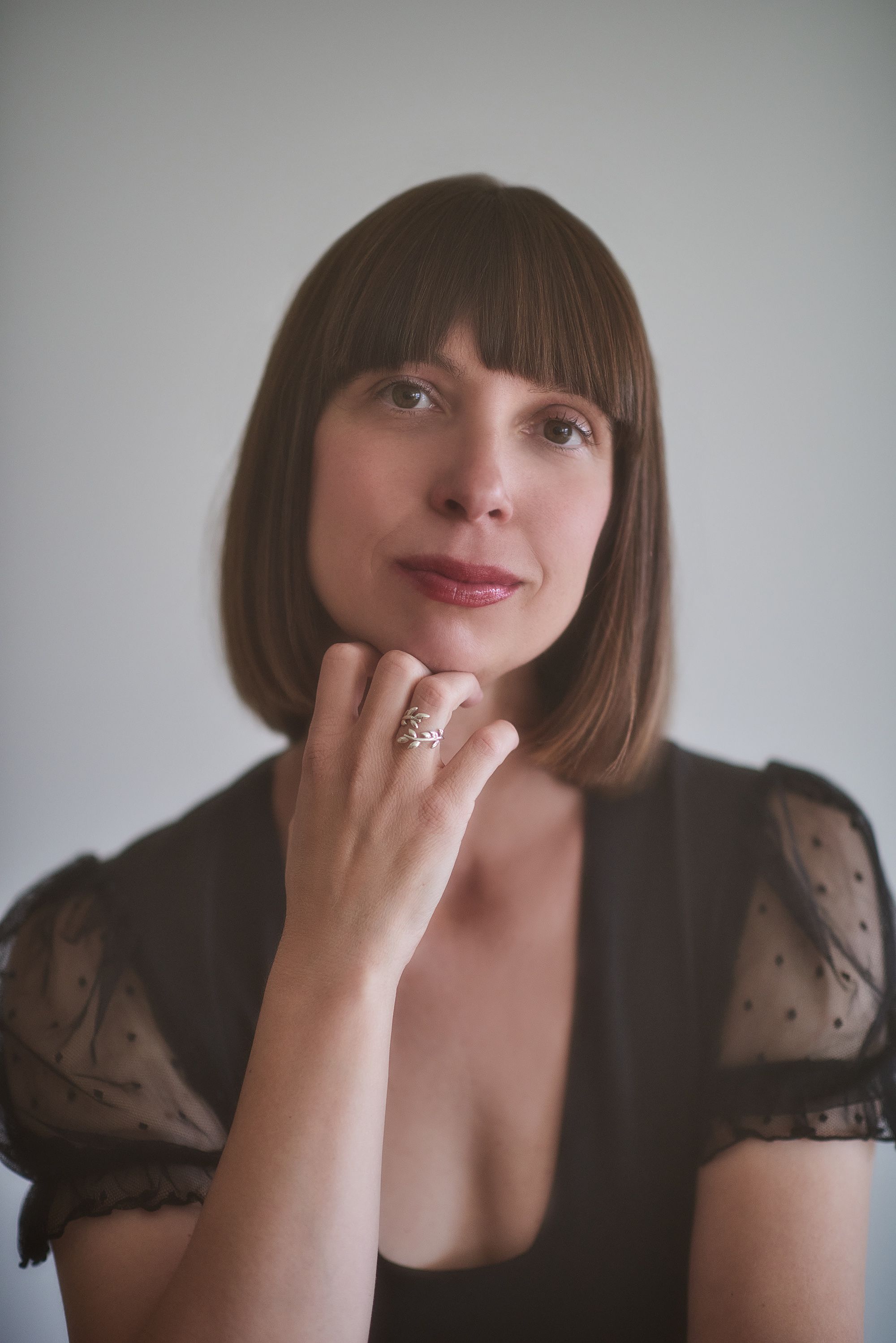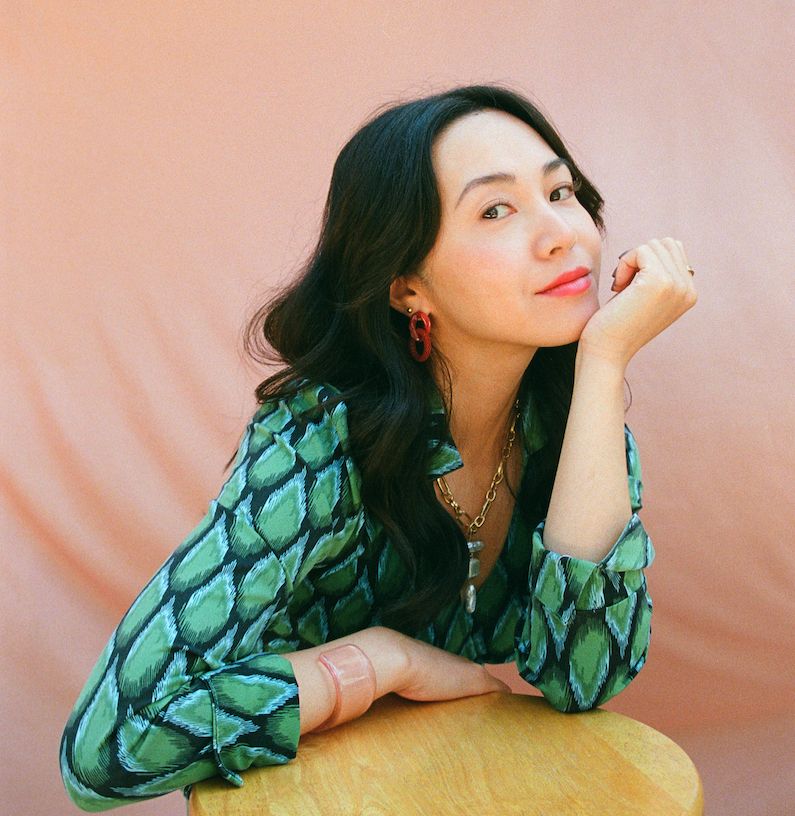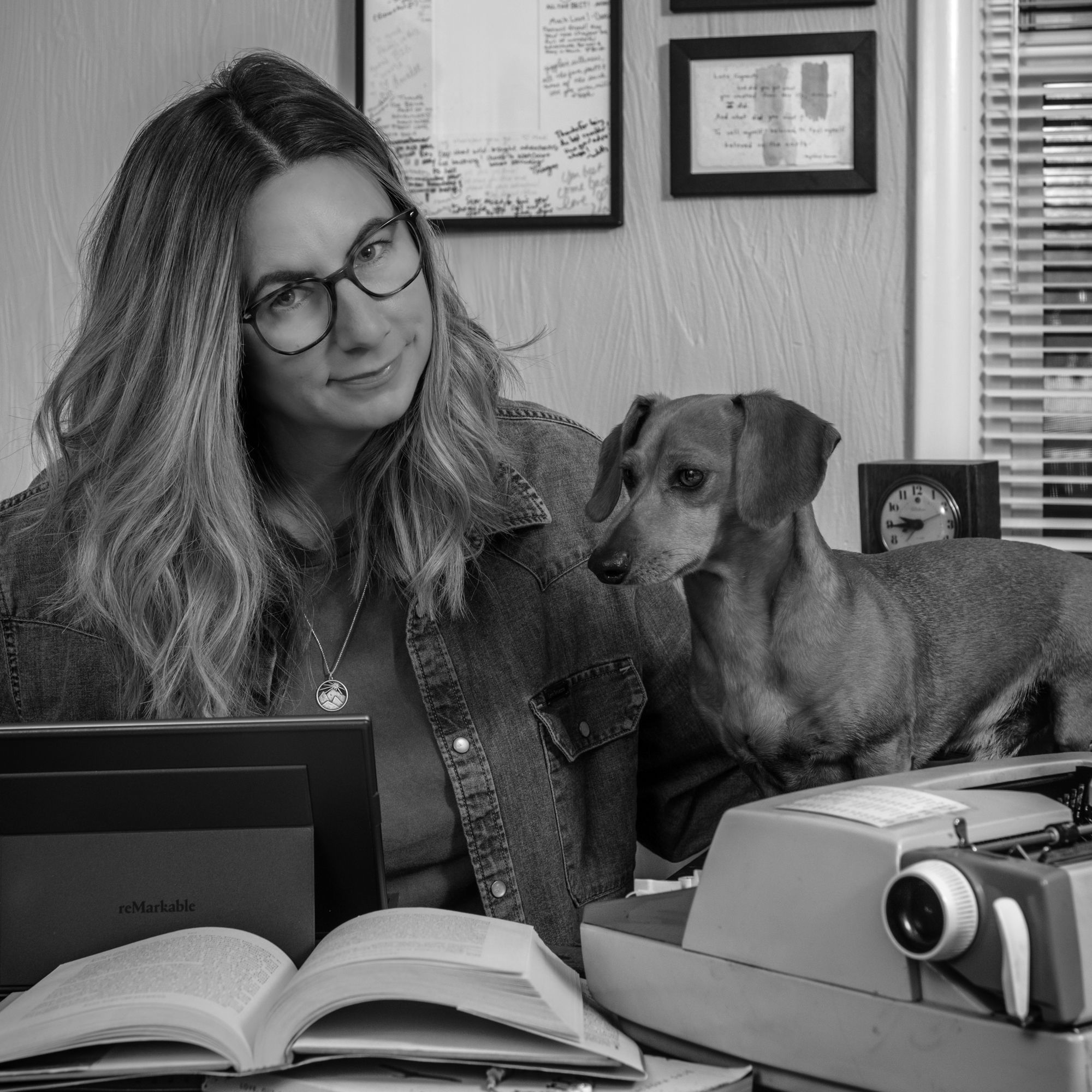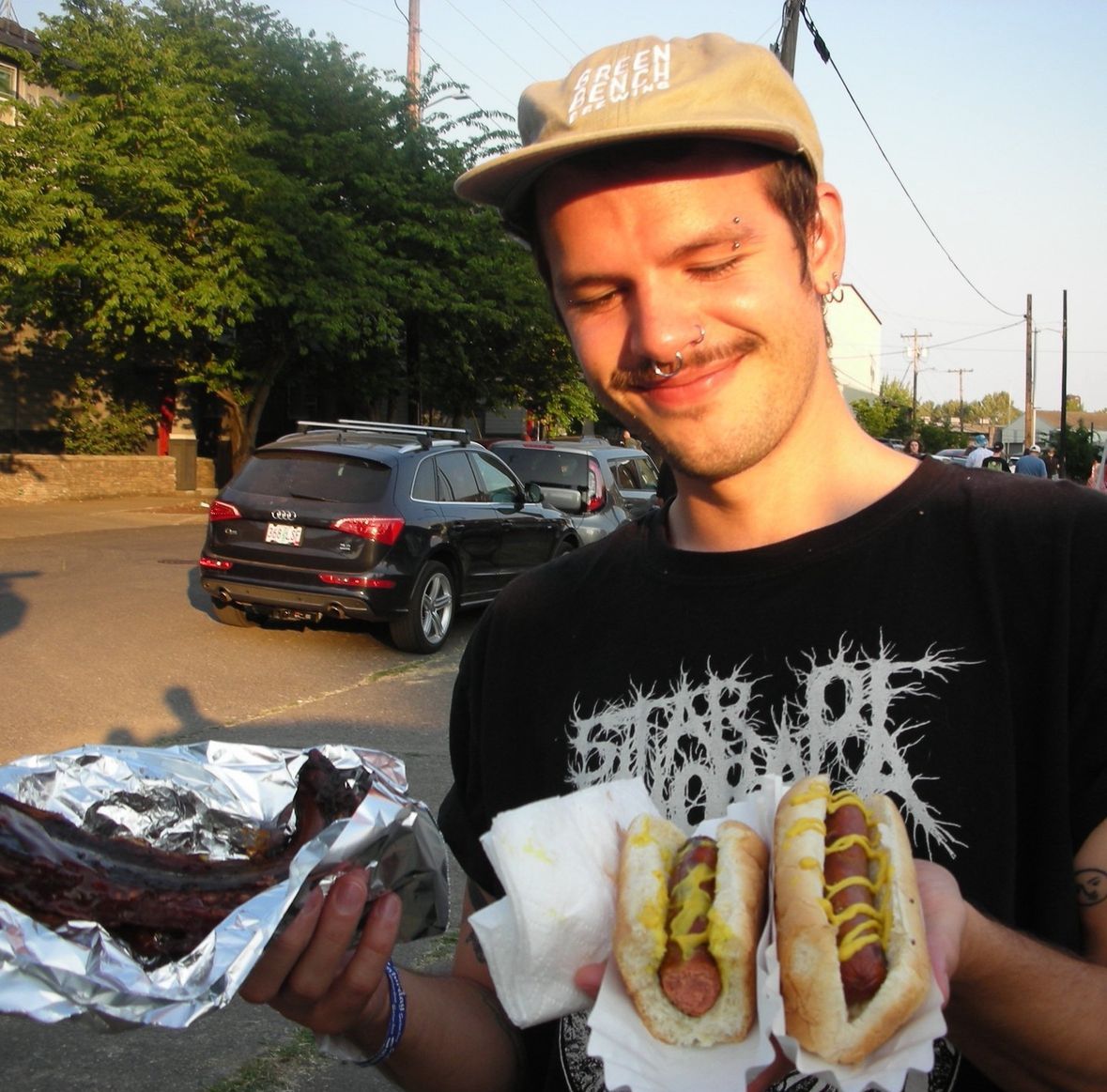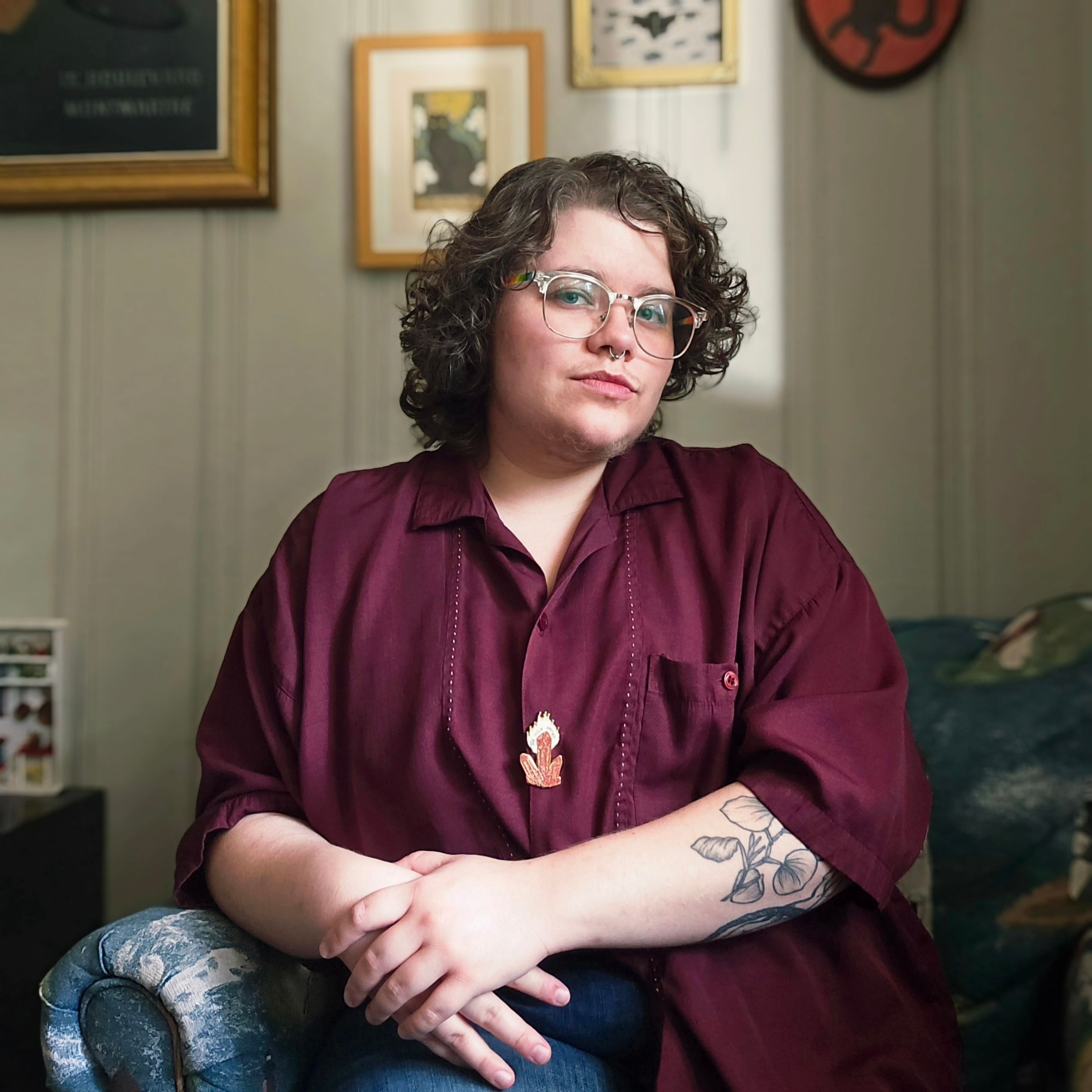Miriam McEwen: First things first—your author’s note really interests me. Even before we’ve officially entered the world of your prose in It’s Fun to Be a Person I Don’t Know, you offer us a key to understanding it. And that’s through your lens as a documentary filmmaker. Can you talk about how your work and expertise in this other medium may have converged with, even instructed, your writing process?
Chachi Hauser: It’s a great question. I do take a lot of inspiration from my filmmaking work. I approach the writing from a very visual standpoint. I think a lot about documentary editing. As if I’ve filmed everything I’ve lived—what footage can I take and how can I tell a story? For this book, specifically, what I’ve learned about Louisiana and its environment, how I now see all the different places I’ve written about, was affected by this film I was producing at the time, Hollow Tree. I spent a year and a half traveling around Louisiana with Kira [Akerman], the director, talking to people about climate change and environmental issues in each region, and it changed how I saw not only Louisiana but also New York. How all of our environments are just so controlled by humans. This experience of researching [for Hollow Tree] really helped me to create the book’s metaphors.
MM: This book is ripe with metaphors. And that strength of imagery extends to your use of chapter titles. Because there are certain, perhaps often unspoken, rules surrounding chapter titles, right? If you’re going to have them, make them good. Make them meaningful. And yours do a lot of work for the book’s overall themes and resonance. A few of my favorites speak volumes about their content: “The Boys Who Wouldn’t Grow Up,” “Steamboat,” “Ashes,” “Disneyfication,” “Imagineering,” “Delta Dawn.” What are you hoping these intertitles (a film word!) communicate about the arc of your memoir and your journey through self-knowledge?
CH: It’s funny you bring up titles because I’ve always felt really bad at titles. I have a hard time with them, and I was very self-critical about the titles of the essays in this book. But since the book came from disparate essays at first, the titles helped me find the structure, because then each essay is boiled down to its purpose in the overarching narrative. With “Steamboat,” for instance, that discovery of connections between everything—between actual steamboats and the Steamboat Willie short and how those things are implicated in the history of the Mississippi River—is exactly what you hope to find as a writer.
MM: Is it fair to say the book would not exist in its present iteration without the Mississippi River? And how did you first encounter the influence of nature on your writerly flow? This includes the contrasting of man-made environments with pristine ones.
CH: This is true. The book would not exist without this river. I’m really obsessed with this river. I became obsessed with it when I moved to New Orleans, but my obsession [with the Mississippi] only deepened while researching for Hollow Tree. But finding the key to the book’s structure happened when I thought about how the castle at Disney [World] was built on top of a swamp, much like New Orleans. So, Disney World is the most obvious example of humans creating something on top of nature, where that something is not supposed to be. It’s the opposition of this beautiful swamp, and what it was meant to be and what humans have made it into. Yet Disney World is supposed to be a place living within the imagination. So, I asked myself, what are the things in the book that are the “swamp”? And what are the things that are the “castle”? Because even though I know now the castle is this construction on top of someplace that was once beautiful, it doesn’t necessarily mean that I don’t also find the castle beautiful in its own way.
MM: What you’re describing sounds almost like a palimpsest in literature or a pentimenti in painting, where traces of the original can still be seen, but the original is now contextualized by the thing that’s covering it. And much of this book is haunted, very intentionally so, by the kind of family history and American history that is not easy to look at. The [violent, racist, patriarchal] history that becomes sanitized in the bright, post-World War II glow of the American Dream.
CH: I laugh because that is Disney. Yes.
MM: Disney is supposed to promote a traditionalist ideal. Yes. Indeed. Now, moving on to the prose poems scattered throughout It’s Fun to Be a Person I Don’t Know—and do you call them prose poems? How do you make sense of their function in your storytelling?
CH: I call them prose poems, yeah. That probably is the most intimate and free and purely in-the-moment way of writing I discovered for this book. This form was very creatively rich for me; I think I took the same energy with me when I wrote the more structured parts of these essays. It also helped me go back and put the whole book together because I started to think of the book as a poem. And there was a pretentious moment when I referred to it as a poem, then I deleted it from the title. But the reason I thought about calling the book a poem was because I wish readers would read it that way, as a vessel capturing a feeling that might not even last until tomorrow. I was inspired by the book Syzygy, Beauty: An Essay by T. Fleischmann. I wrote about it for my critical thesis at VCFA, and even though they [Fleishmann] call that book “an essay,” it could also be called a collection of prose poems. I love that T. Fleischmann takes back this idea of the essay and twists it. Because I always love people who play with genre and gender.
MM: Which is an excellent transition to the next point I want to discuss with you. In “This Summer, High River,” the first chapter, you write about this exchange where someone weirdly calls you “malleable,” suggesting that your gender is malleable, that your very person is malleable. As if you are something to be handled or manipulated. And you gorgeously, very understatedly, write in response, “Fluid, I think, I wish he’d said fluid.” I found this moment to be a standout. Because of how honest it is. Because of the simplicity of the prose. So, how does this articulation of resistance reflect your identity, as well as the forms you choose to employ in your writing?
CH: Thank you. It’s funny because I want to be seen as fluid, and I want this book to be fluid. But thinking about how much I edited and worked on the book—I hope that [fluidity] is the image I give. But it’s actually a lot of control on my part to offer that impression. Maybe I wrote to understand that fluidity, and have other people understand it in ways that I couldn’t say with a few words. I can’t make it make sense in a small space. The whole experience is this fluidity.
MM: Right. And if that’s what you live by, words, art and symbolism, and you put these truths out there on your own terms—they’re real. People can’t take them from you. On that note, let’s talk about Peter Pan. I love how this book emphasizes the breadth of the character’s history, including Peter’s inherent queerness as played by a host of female actors [notably, Betty Bronson in the 1924 film]. And in that film, there’s a kiss between Wendy and Peter, even between Wendy’s mother and Peter. And you write about that moment, the significance of that moment, with such vivid emotion.
CH: Yeah, that’s the thing I find so interesting about Disney and about this idea of imagination, where it also allows for things that maybe we wouldn’t allow for in “normal” life. That a girl could be a boy. The thinking is, as long as it’s imaginary, it’s okay in that world. There’s a supposed sexlessness to someone who’s in this in-between, and I want to be in this in-between in a sexy way. I want to make it sexy to be in-between, which I haven’t seen so much of.
MM: Totally, Chachi. I really believe the book achieves that in-between sexiness. The memoir’s title seems to hold the center of what sexiness can mean as well. It appears in the “Delta Dawn” chapter, which surprised me only because of the lateness of that chapter in the book. I was pleasantly surprised. Here’s this declaration. But it’s interesting that it doesn’t come before, even as you’re discussing all the different facets of yourself. That title statement comes in this moment of true love, of being seen deeply, finally. Maybe finally. And that’s when you write, “…it’s fun to be a person I don’t know.” How does that feel true to you and how did you arrive at it as the title of your book?
CH: It was the sentence before it was the title. Actually, it was Trinie [Dalton], one of my advisors at VCFA, who had highlighted a lot of phrases and words that she thought might be nice as titles. And even out of the context of the sentence it was in, it felt true to what the whole book was about. In the sense that I’m writing this book to understand parts of myself that I hide. Maybe that’s why I feel it’s fun to be a person I don’t know. Because it’s scary to be a person that I know, because then I have to acknowledge things about my family that I’m ashamed of or things about myself that I’m scared to live fully. But at the same time, there’s the opposite way to see it, which is kind of the way it’s operating in this sentence. That maybe letting go of all these things is a way of feeling free. Letting go of these judgments about myself and the things that I think make up my identity. That I should just live and feel. Be pure feeling. You know?
MM: I do. Because anybody in a family knows. As soon as anything generational is brought to the table—oh, your great-grandmother was this and your great-grandfather was that. And your great-uncle did that thing. You do feel that you’re learning something about yourself through them. But it’s not necessarily helpful to who you are right now, who you are trying to be. And I think you are putting that dynamic to good use in this book. How you’re investigating the surface and the depths. And that goes back to New Orleans, Manhattan, Disneyland, Disney World—all these places being built upon Indigenous lands and swamps and islands. Lands that, in another timeline, in a parallel universe, should be preserved and honored in a purer way.
CH: Yes. I agree. And these places are built to be “fun.” That’s the idea of what Disney is. Fun for the whole family.



